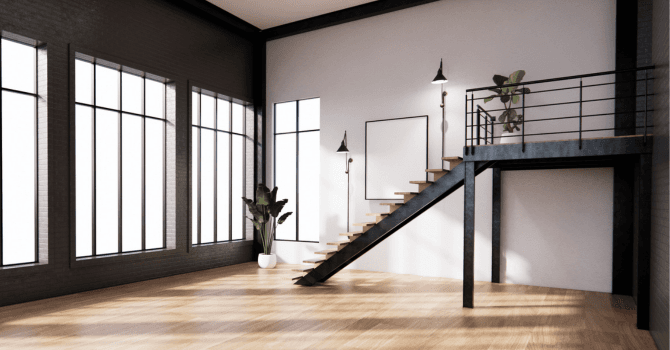
It’s hard to deny that basements and bathrooms are generally the dampest rooms in a home. Keeping up with maintaining these spaces can often be a challenge. It’s crucial to keep humidity and moisture levels as low as possible, as excess moisture will lead to deterioration as well as mould and mildew growth. So what methods can you put in place to keep these things at bay? Enter the vapour barrier.
The vapour barrier comes down to having a good level of insulation in the walls and floors, helping you to keep the amount of humidity in these areas under control. This installation can be an excellent way to solve persistent humidity problems.
What is the role of a vapour barrier in a home?

When building a new home, there are two vital questions that all professionals take into consideration:
How can we keep water out?
If water gets in, how can it escape?
These questions can help us think more broadly about why we might install a vapour barrier in the first place.
The Canadian Mortgage and Housing Corporation (CMHC) has compared the different insulation components of a house to a wool sweater: “A wool sweater will keep you warm if the wind is not blowing and it is not raining. On a windy, rainy day, wearing a nylon shell over your wool sweater helps keep you reasonably dry and warm.”
This metaphor is nice for a house, as its layers operate in a similar fashion. On the outside, underneath the brick or siding, there’s an air barrier that works in the same way as the nylon aforementioned— it keeps the wind from blowing through and finding its way into your home. Then there is the insulation, like the sweater and finally a vapour barrier. This protective layer helps keep moisture away from the house's structure, where it can do damage.
A vapour barrier is generally made of plastic or foil used as a damp-proof layer to curve the formation of moisture in walls, floors, crawl spaces, attics, your foundation as well as your roof. Not only will this help the structure of your home last significantly longer, but it will also aid in the avoidance of mould and mildew growth which are typical of excess dampness. Having mould and mildew anywhere in the surfaces of your home is a serious health risk. Further, damage caused by excess condensation or humidity is challenging to deal with. It can greatly threaten the materials themselves as well as any insulation already in place.
Not only can moisture find its way into your home from the exterior, but there are many sources within your interior. Many daily activities involve a buildup of moisture and this includes cooking, doing dishes and laundry, taking a shower and so on. This humidity and condensation can compromise the integrity of your walls, ceilings and floors but a vapour barrier can assist you in keeping everything under control.
Installing a vapour barrier: things to know
There are several materials that can be used as a vapour barrier aside from the ones mentioned above, and they are as follows:
Elastomeric coating;
Metalized film;
Vapour retarder paints;
Asphalt-coated paper;
Exterior grade plywood;
Glass and metal sheets.
All the aforementioned materials have a different level of permeability, and the one you choose will greatly depend on the climate you live in as well as how much humidity you produce inside the home. Do spend some time researching the proper vapour barrier right for your conditions, as it would be frustrating to put in time, energy and money to an install that isn’t resistant enough. It’s also worth mentioning that for a vapour barrier to work correctly, there needs to be sufficient insulation in the walls of your home. Insulation is very important, and if you’re curious about this subject, check out our article on the top signs of poor insulation.
As mentioned, the vapour barrier will be placed throughout walls, ceilings and floors. In your walls, it should be installed before posing the gypsum board and on the interior face of the insulating material. Basically, placed between the insulating material and the drywall.
With this type of installation, the humidity will not move through the walls, therefore maintaining the longevity of the surfaces. Installing a barrier in both floor and walls will further improve the room's resistance to humidity.
Benefits of a house that is well insulated

Investing in your home's insulation can really improve your quality of life. Not only will it prevent mould and mildew growth as well as excessive humidity, but it will also allow a better airflow. Depending on the insulating material you’ve used, you may end up saving up to 50% on your electricity bills. This means that a well-insulated house will ensure a comfortable indoor temperature all year round, both summer and winter.
Lastly, keeping energy use and costs down is a green-friendly practice, and we should all be thinking a little be more about taking care of the environment.
Get 3 renovation quotes for your home insulation project
RenoQuotes.com can help you get quotes for your home insulation project. If you submit your project to us, we’ll put you in contact with the best-qualified contractors in our network. Fill out the form on the homepage (it only takes a few minutes), and you will receive quotes from home renovation and insulation specialists.
Dial 1-844 828-1588 to speak with one of our customer service representatives
Looking for something else?
Related articles
The latest industry news, interviews, technologies, and resources.

Editorial Team
•07 Nov 2023
For city dwellers who live in multi-storey buildings, the balcony makes the outside world accessible. It’s a little corner where we can rest, a place to enjoy the sun and maybe even, to set up a small garden. Houses located in the countryside or in the suburbs are also sometimes equipped with balconies, but their role is less important. This is because the occupants of the house generally have access to a yard or other large green spaces.

Amanda Harvey
•07 Nov 2023
The windows of your home have a multitude of uses: they allow for an excellent view, give access to a cool breeze on warm or stuffy summer days as well as block out the chilly air during winter months. However, even when your windows are closed, one of the main ways that air can escape out into the world is through the small spaces between the window frame, glass and walls.

Editorial Team
•15 Jan 2026
Is bundling up before heading out to work already making you dream of warmer days? Don’t worry—sunny weather is just around the corner.

Editorial Team
•13 Aug 2025
More and more women are daring to break the boundaries in this male-dominated industry, proving that they belong on jobsites.

Editorial Team
•07 Nov 2023
Are you curious about changing the layout of your mezzanine to improve the design of this living space, and are looking for some ideas before you begin this project? Take a peek at these wonderful examples of mezzanines to offer you some inspiration.